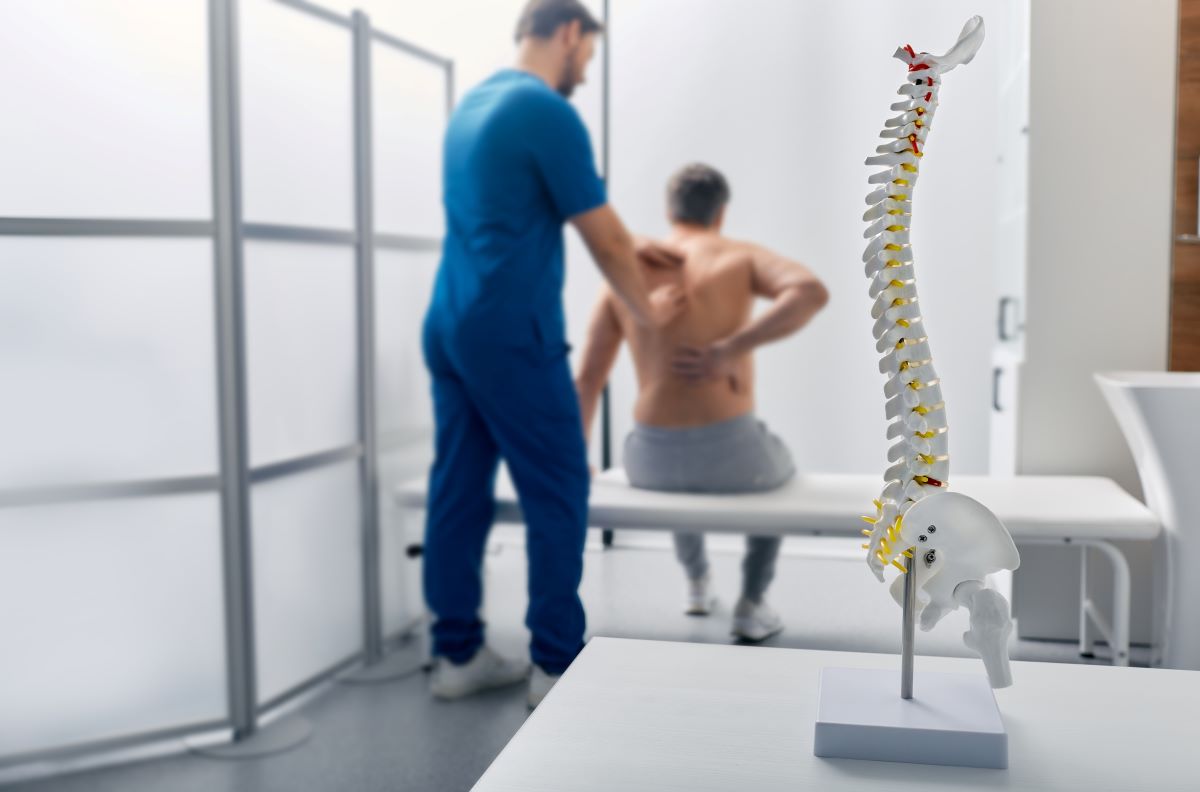
Dealing with chronic back pain is a reality for so many of us, and we understand firsthand just how challenging it can be. It’s exactly why we’ve delved into the world of non-surgical spinal decompression treatments as a potential source of relief.
Through this article, let us walk you through the benefits, set your expectations, and explore just how effective these treatments can be. Stay tuned – comfort might just be closer than you think!
Understanding Spinal Decompression Treatments
Non-surgical vs Surgical Decompression
Non-surgical spinal decompression therapy presents a noninvasive, drug-free option for those tackling chronic back pain. Unlike surgical decompression that requires hospital stays and lengthy recovery periods, this method banks on technology to gently stretch the spine and relieve pressure from discs and nerves.
It introduces no cuts or invasive procedures into the body, aiming for pain relief without the risks associated with surgery.
Surgical options, while effective for certain cases, come with higher costs, increased risks of complications, and longer downtime. Non-surgical alternatives offer a much-needed respite for individuals preferring conservative treatment methods.
These include techniques like spinal traction or chiropractic care combined with physical therapy to enhance outcomes. Our journey embraces these gentle yet powerful nonsurgical treatments as promising pathways toward managing spinal conditions effectively and safely.
How Non-surgical Decompression Works
Non-surgical spinal decompression works by gently stretching the spine. This process creates negative pressure within the spinal disc, which helps retract herniated or bulging discs. As a result, this action alleviates pressure on the nerves and other structures in your spine.
This relief of pressure can lead to an improvement in blood flow and nutrient exchange to the injured area, fostering a better healing environment.
During effective treatment sessions, patients lie on a specialized table controlled by a computer that customizes treatment to their specific needs. The technology used in this therapy is designed for safety and comfort, ensuring precise control over the force and direction of spinal traction.
Benefits of Spinal Decompression
- Reduces chronic discomfort
- Increases mobility
- Promotes the natural healing process
- Alleviates pain symptoms
- Promotes long-term health of a spine
- Encourages discs to retract or reposition themselves
- Reduces bulging and mitigating pressure on nerves
Signs that you need Spinal Decompression
- Chronic back pain or neck pain
- Difficulty standing or walking
- Spinal Stenosis
- Failed back surgery
- Sciatica
- Muscle weakness
- Numbness or tingling
What to Expect During Non-surgical Decompression Therapy
Procedure
- You will be placed comfortably on a therapy table. This specific table controls the force and angle of disc distraction, which reduces the body’s natural tendency to resist external force and spasm.
- We gently stretch your spine, creating negative pressure within your discs. This vacuum-like effect pulls bulging or herniated discs back into position, relieving pressure from nerves and other structures in your spine.
- Each session involves wearing a harness around your pelvis and another around your trunk.
- We customize the treatment settings based on your specific condition to ensure you experience maximum comfort while achieving effective results.
Duration and Frequency
Patients may attend sessions up to four or five times a week at the beginning. Over time, as symptoms improve, the frequency decreases. Each session lasts approximately 30 to 45 minutes.
This structured approach maximizes the therapeutic benefits while allowing for gradual improvement.
We adjust each treatment plan to fit individual needs and conditions, taking into account factors like severity of pain and overall health. Some may see significant improvements within just a few weeks, while others might need longer therapy durations for optimal results.
Risks and Complications
While nonsurgical spinal decompression therapy is generally considered safe and well-tolerated for many individuals, as with any medical procedure or treatment, there are potential risks and complications to be aware of. It’s important to discuss these risks with your healthcare provider before undergoing decompression therapy. Here are some potential risks and complications associated with nonsurgical spinal decompression:
- Mild discomfort or pain can occur in some patients during the initial stages of treatment.
- The use of traction devices or equipment during decompression therapy may cause skin irritation, redness, or bruising in the area where the devices are applied. Proper padding and positioning can help minimize this risk.
- Decompression therapy may not provide the intended relief and could potentially worsen existing symptoms. This may occur if the therapy exacerbates underlying spinal conditions or if the treatment is not properly administered.
- Some individuals may experience muscle spasms or strain during or after decompression therapy sessions, particularly if the treatment is too aggressive or if the muscles are not adequately relaxed during the procedure.
Aftercare
- Rest and avoid strenuous activity .
- Stay hydrated.
- Maintain good posture.
- Follow rehabilitation and corrective exercises.
- Apply ice or heat.
- Avoid smoking.
- Monitor symptoms and contact your healthcare provide if needed.
Find Relief with Non-Surgical Spinal Decompression Therapy Today!
Exploring non-surgical spinal decompression treatments offers hope for those with chronic back pain. These therapies, focusing on relieving disc pressure and promoting healing, provide a significant alternative to invasive surgery.
The combination of decompression with physical therapy has shown greater effectiveness in managing pain. Despite its cost, the benefits in terms of pain relief and mobility improvement make it an appealing option.
Let this be your motivation to explore conservative treatment options that could transform your quality of life without resorting to surgery. Schedule a consultation with the City Chiro Sports Center in Flower Mound today!
